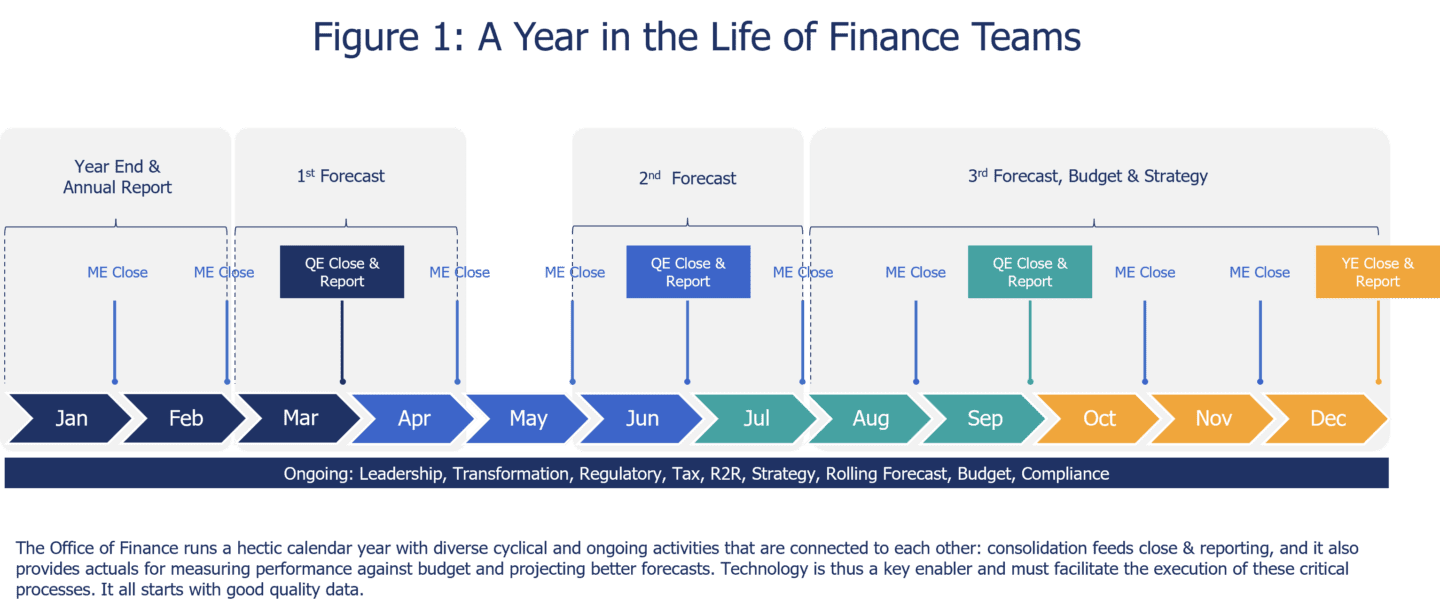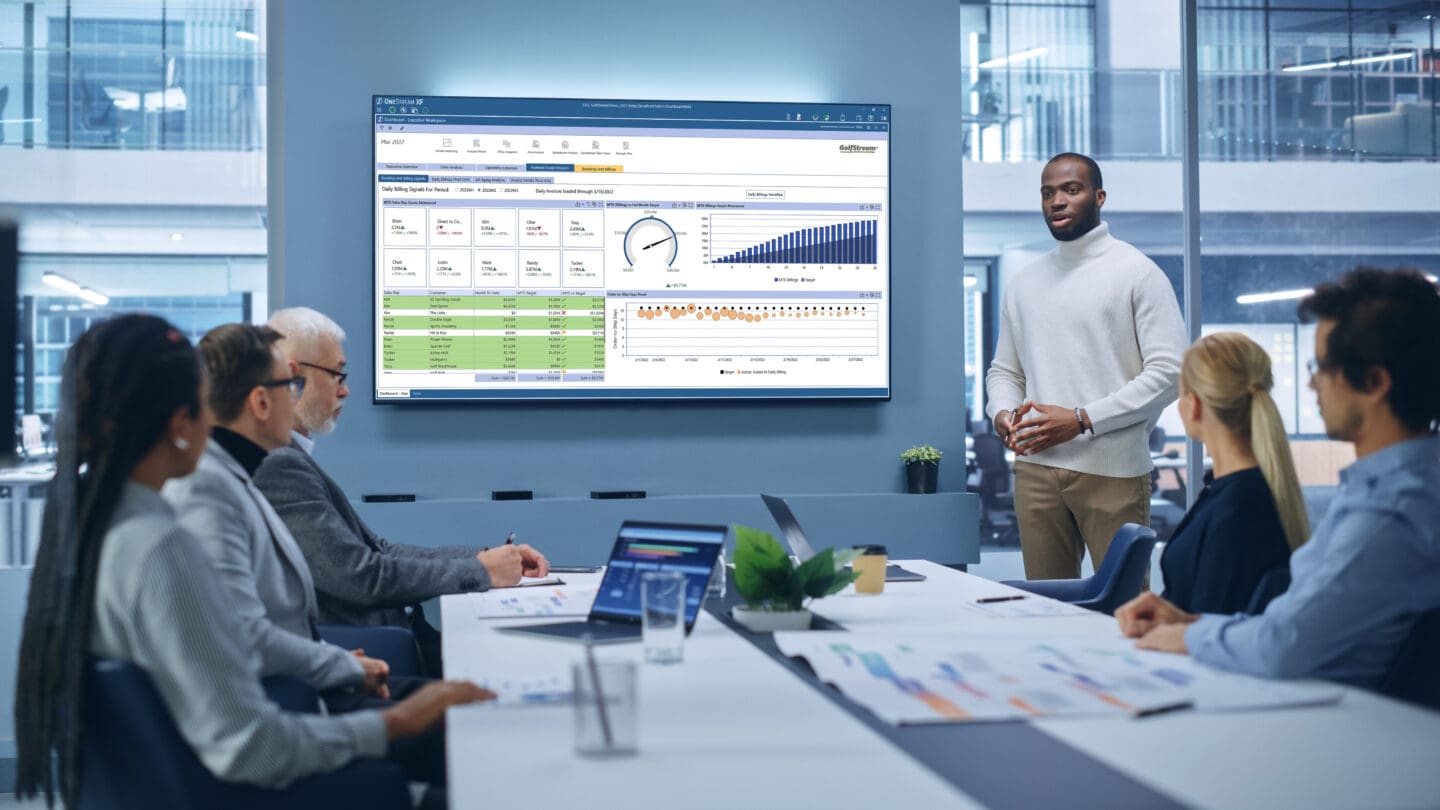Buying EPM software is a complex and time-consuming process – one that sometimes becomes a buyer’s nightmare. After all, the process involves managing stakeholder relationships and communicating with multiple software vendors and system integrators. The demands for thinking critically, meeting aggressive deadlines, navigating office politics and making compromised decisions further complicate the process. But overall, software vendors must satisfy the requirements based on very demanding standards to win the buyer’s heart. All those dynamics mean that demonstrating the application is perhaps the single-most important step in the buying process. What, then, does it take for you to get the perfect EPM demo?
Demoing Is Hard for the Buyer and the Seller
Every software demo team wants to hit the mark when it comes to your expectations. But have you ever gazed through the room after a demo and found your colleagues’ facial expressions looking unimpressed or bewildered – basically anything but impressed?

Unfortunately, these situations happen often, for several reasons. To name a few, lack of preparation, misalignment between requirements and capabilities shown, discordant emotional states and more are all possible reasons. Preparing for a demo with the software demo team is therefore key for a successful outcome.
Delivering an EPM demo is pretty much like conducting an orchestra. There is planning, selecting musicians with the right skills, assembling the orchestra, tuning the instruments, rehearsing and more. Then, during the concert the conductor ensures all musicians – the string section, the brass section, etc. – are following the music sheet. Otherwise, all the right notes will likely be played in the wrong order! In a similar way, the demo team needs to plan, understand the requirements, assemble a skilled demo team with influential representatives, rehearse and … rehearse, all to ensure a smooth and enjoyable demo experience for you!

So why, then, can a demo go wrong? Or more importantly, what needs to happen to ensure every EPM demo is tuned to exceed expectations? This post walks you through 3 considerations for a successful EPM demo.
3 Considerations for the Perfect EPM Demo
The role of the Office of Finance is evolving to become a trusted business partner that enables and deploys the corporate strategy across the organization. Thus, an EPM solution must support the diverse cyclical processes that Finance teams execute (see Figure 1). The application must also be designed to scale and to accommodate the ever-changing needs from Finance. So when you’re shopping for an EPM solution, it must scale to support the future.

The 3 key considerations below will help you make the most of an EPM demo:
1. Actively engage discovery sessions
A good discovery is key for a successful demo afterward. Demos can go wrong when insufficient time is apportioned to explain your needs in depth. To help ensure things go right, be open to feedback from the vendor’s team and engage in a discussion to level expectations. Discovery is also a great moment to identify risks and start digging up hidden costs:
- Validating the solution scope to avoid risk. The best practice to identify risks is to validate the solution scope together with the vendor. Describe pain points and needs holistically and within the context of the greater Finance processes under which those pains and needs fall (See Figure 1). Consider the flexibility the solution provides to cover all critical financial processes. Especially, revisit the scope if certain future needs can be tackled on the current buying process. Doing so will avoid risk in the long term.
- Surfacing hidden costs. Focus on total cost of ownership and ask questions about not only the infrastructure and third-party applications required to solve for your needs, but also how well the solution can support future requirements.
At the end of discovery, you should be able to answer the following questions:
- Are we aiming for the right scope?
- Are we targeting the right software solution for the problem at hand? Does the software solve for future needs?
- Do we need to adjust the budget due to scope changes?
- Have we agreed to the EPM demo content?
2. Use the demo to further qualify the vendor
Interactions prior to and throughout the demo are a fantastic opportunity for you to further qualify the vendor: is the vendor being professional? Does the vendor understand your industry and business? Does the vendor have the right values and culture? Those questions matter because past behavior is a good indicator of future behavior. Thus, how the demo team works and delivers a demo may reflect the cultural traits on how the company may support you after the solution implementation.
Also, experience has shown that an EPM solution is rarely understood with just one demo, so don’t be afraid of asking for follow-up sessions. In addition, don’t let your current software vendor tarnish the relationship with other vendors or cut down the time needed for assessing other products!
3. Defining the right demo content
Many EPM demos start with a nice-looking dashboard populated with clean data. All very appealing, but how does the data get in there? How easy is to build that dashboard? It is important that key technical aspects are demonstrated. That knowledge will save you many headaches in the future! Accordingly, always request the following points in the demo content:
- Data quality. Knowing how the solution handles and validates the data is quintessential to building one version of the truth between the EPM solution and the source systems where the data resides. Does the solution require loading the same data more than once to support different processes? How easily can you add a new entity structure or a new product SKU? These aspects can hinder the speed at which you can make decisions or add rigidity to business changes, such as M&A activity or expansion into a new market. Learn more about why financial data quality matters.
- Process flexibility. The EPM solution should adapt to your process instead of forcing it to fit rigid workflows. You may be looking for process harmonization opportunities when you replace software, however flexibility will always be required to adopt new business requirements.
- Features and functions. The features and functions are critical since those aspects are why you want to use the technology in the first place. During discovery, you should have clarified your requirements well enough, so now the demo team must show how the solution matches your current needs and future vision.
- User experience. The experience does indeed drive user adoption. But that experience involves much more than just the look and feel. Importantly, you are investing in user adoption when your teams can use one EPM solution for the full range of Finance processes and cover future needs.
- Core Technology. The type of technology can help you decide on the best deployment model (SaaS, PaaS, on-prem), but also informs total cost of ownership by surfacing the hidden costs. Does the infrastructure need ETL middleware or data warehouses? Does it scale to cover your business needs? Is the infrastructure capable of managing FX conversions, multi-GAAP standards, etc. without add-ons?
These aspects require different audiences, so splitting the EPM demo content into more than one session is a standard practice.
Conclusion
Investing time in preparation will help you better qualify the vendors and revisit the scope of each EPM solution to ensure you get the best from your investment. To ensure your EPM demo session is fruitful, clearly communicate your needs and expectations. Also consider the feedback you receive from the demo team to really build the best demo content.
Finally, during the EPM demo, you shouldn’t focus only on the user experience. No matter how easy to use the tool is, adopting it is not a good move if it doesn’t provide the data, doesn’t facilitate the process or people don’t want to use the tool. Adequate demo time must be allocated to prove the EPM solution to ensure it fits the holistic financial process and not just isolated use cases.
Rest assured that every demo team strives to thrill the audience with a stunning demo and end with a room filled with excitement:

Ready for the Next Step?
Meet our expert team of solution consultants, and book a demo of OneStream’s Intelligent Finance Platform.
Get Started With a Personal Demo



